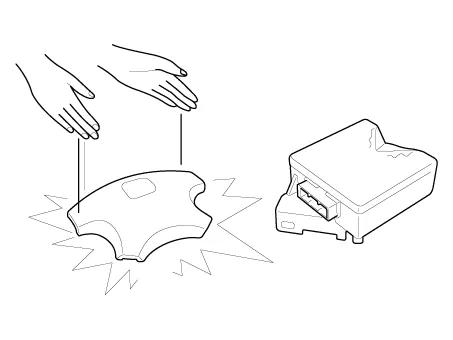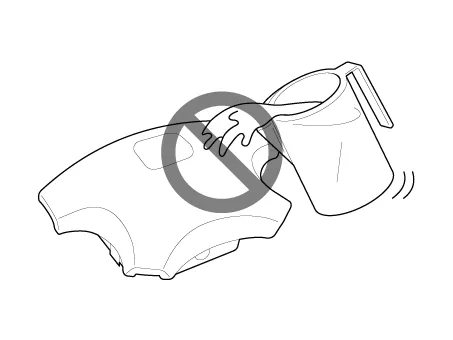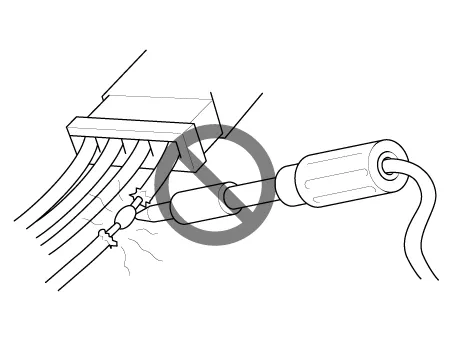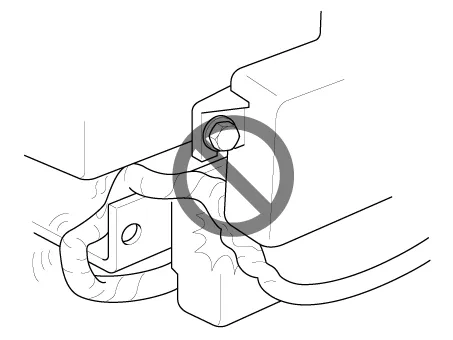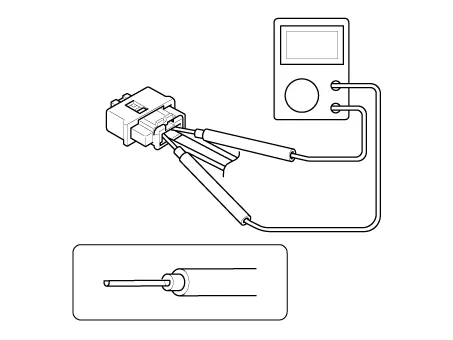Hyundai Elantra (CN7): Restraint / General safety information and caution
| Precautions |
| • | When performing electrical inspections, always turn the ignition switch OFF and disconnect the negative cable from the battery, and wait at least three minutes before beginning work. |
The contents in the memory are not erased even if the ignition switch is turned OFF or the battery cables are disconnected from the battery.
|
| • | Store the removed airbag with the pad surface up. |
| • | Keep free from any oil, grease, detergent, or water to prevent damage to the airbag assembly.
|
| • | Store the removed airbag on secure, flat surface away from any high heat source (exceeding 85 C/185 F). |
| • | Never perform electrical inspections to the airbags, such as measuring resistance. |
| • | Do not position yourself in front of the airbag assembly during removal, inspection, or replacement. |
| • | Refer to the scrapping procedures for disposal of the damaged airbag. |
| • | Be careful not to bump or impact the SRS unit or the side impact sensors or front impact sensors whenever the ignition switch is ON, wait at least three minutes after the ignition switch is turned OFF before begining work. |
| • | During installation or replacement, be careful not to bump (by impact wrench, hammer, etc.) the area around the SRS unit and the side impact sensor and the front impact sensors. The airbags could accidentally deploy and cause damage or injury. |
| • | Replace the front airbag module, SRSCM, and front impact sensor when the front air bag has deployed. Replace the airbag wiring when the airbag wiring gets damaged. Replace the side airbag module, the curtain airbag module, SRSCM, and side impact sensor when the side air bag has deployed. Replace the airbag when the airbag wiring gets damaged. |
| • | After a collision in which the front airbags or the side air bags did not deploy, inspect for any damage or any deformation on the SRS unit and impact sensors. If there is any damage, replace the SRS unit, the front impact sensor and/or the side impact sensors. |
| • | Do not disassemble the SRS unit, the front impact sensors or the side impact sensors. |
| • | Turn the ignition switch OFF, disconnect the battery negative cable and wait at least three minutes before beginning installation or replacement of the SRS unit. |
| • | Be sure the SRS unit, the front impact sensors and side impact sensors are installed securely with the mounting bolts. |
| • | Do not spill water or oil on the SRS unit, or the front impact sensors or the side impact sensors and keep them away from dust. |
| • | Store the SRS unit, the front impact sensors and the side impact sensors in a cool (15 - 25°C/ 59 - 77°F) and dry (30 - 80% relative humidity, no moisture) area. |
| • | Never attempt to modify, splice, or repair SRS wiring. If there is an open or damage in SRS wiring, replace the harness.
|
| • | Be sure to install the harness wires so that they are not pinched, or interfere with other parts.
|
| • | Make sure all SRS ground locations are clean, and grounds are securely fastened for optimum metal-to-metal contact. Poor grounding can cause intermittent problems that are difficult to diagnose. |
| • | When using electrical test equipment, insert the probe of the tester into the wire side of the connector. Do not insert the probe of the tester into the terminal side of the connector, and do not tamper with the connector.
|
| • | Use a u-shaped probe. Do not insert the probe forcibly. |
| • | Use specified service connectors for troubleshooting. Using improper tools could cause an error in inspection due to poor metal contact. |
| Disconnecting |
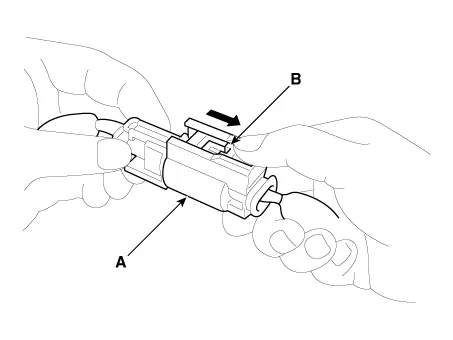
| Connecting |
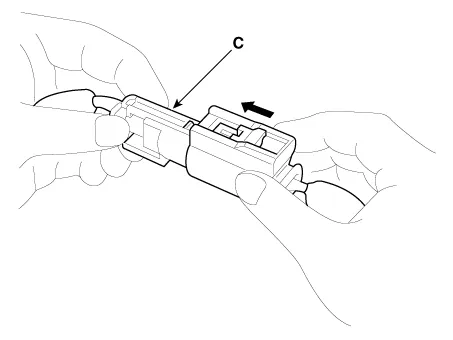
Warning Lamp ActivationThe airbag system control module detects the presence or absence of an airbag system when power is supplied and turns on the airbag warning lamp.
Other information:
Hyundai Elantra (CN7) 2021-2025 Service Manual: Description and operation
Description and operation The System may be limited when • The radar sensor or camera is blocked with a foreign object or debris.• The camera lens is contaminated due to tinted filmed or coated windshield, damaged glass, or stuck of foreign matter (sticker, bug, etc.
Hyundai Elantra (CN7) 2021-2025 Service Manual: Parking Collision-Avoidance Assist (PCA)
Components and components location Components and Components Location Schematic diagrams Schematic DiagramsParking Collision-Avoidance Assist (PCA) Ultrasonic sensorParking Collision-Avoidance Assist (PCA) Rear view camera Repair procedures RemovalParking Collision-Avoidance Assist (PCA) Unit1.
Categories
- Manuals Home
- Hyundai Elantra Owners Manual
- Hyundai Elantra Service Manual
- Rear Seats
- Integrated Thermal Management Module (ITM)
- Restraint
- New on site
- Most important about car


